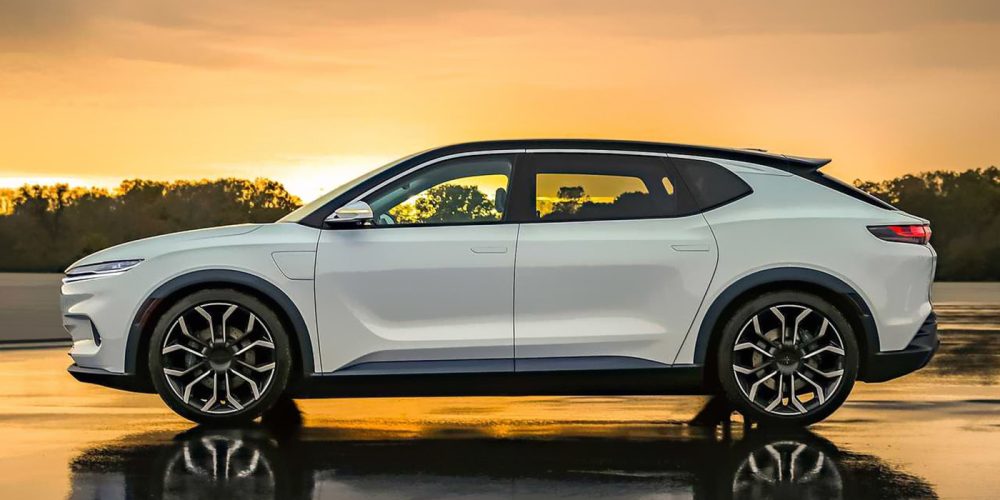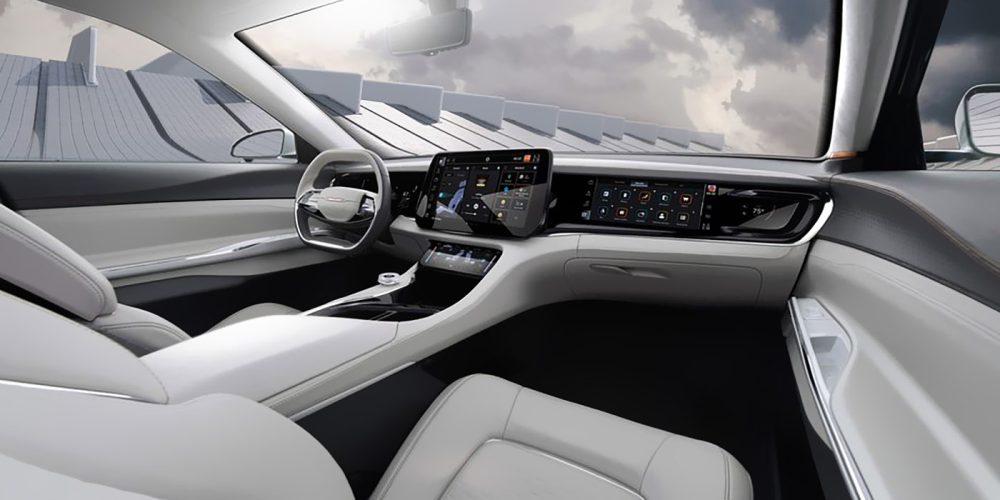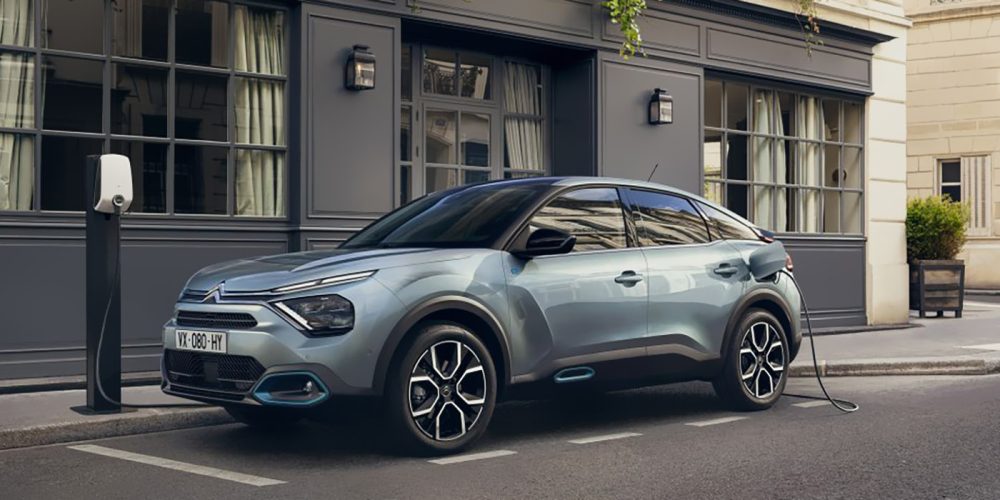
Chrysler today officially revealed its new Airflow Concept at CES 2022 – a name invoking the legendary streamlined Chrysler from the 1930s – promising “Level 3” autonomous driving capabilities, more than 350 miles of range, and a fully battery-electric portfolio by 2028. The only real question left is: will they build it?
Before we get too far down the will “they/won’t they” rabbit hole, let’s talk about the Chrysler Airflow Concept as a car. At first glance, it’s got a crossover-y profile and decent ride height – seemingly a must-have feature in the US car market and putting it right in line with cars like the Volkswagen ID.4, Nissan Ariya, and Ford Mustang Mach-E. It’s safe to assume then, that whatever form the first production battery-electric Chrysler takes when it reaches the market in 2025, it will probably look a lot like the Airflow Concept. At least in profile.
And, frankly, it’s not a bad-looking profile, as far as mainstream SUV/crossovers go. It’s certainly better than the last Chrysler-branded SUV, the Aspen.

Chrysler’s own PR supports the belief that “this is it”, hinting strongly that the Airflow is giving us a peek at Chrysler’s BEV-era design language. “The Chrysler Airflow Concept represents the start of the brand’s journey toward a fully electrified future. It is the result of a thoughtful synthesis of the full arsenal of Stellantis’ connected vehicle technology – inside and out,” said Ralph Gilles, chief design officer, Stellantis. “The design features a decisively elegant aerodynamic exterior and a modern, sophisticated interior that takes the customer on a new level of digital delight.”
Translating from corporate-speak, Chrysler has less to lose, image and market-wise, than Ram, Jeep, or even the Dodge brands in the US, when it comes to ditching internal combustion. Combined with the fact that Chrysler still sees itself as a premium car brand, making them the guinea pig for Stellantis’ first American BEV makes perfect sense.
What about the rest of it?
While it’s a pretty safe bet that the first all-electric Chrysler will look something like this, the official specs on the Airflow Concept are pretty ambitious for a) a car company that has zero track record of doing anything like this, and b) whose CEO said, just a few weeks ago, that they couldn’t build cars like this for a profit.
With that in mind, the more outrageous claims that the car, “integrates leading-edge drive-system technology with intuitive AI and connected vehicle technology that delivers 350- to 400-mile range and fast-charging functionality… (and) STLA AutoDrive to deliver Level 3 autonomous driving capabilities, which will also be upgradable via OTA updates,” should be taken with a grain or two of salt.
If that tech feels like something of a moonshot for Chrysler at the moment, at least the infotainment system seems more credible – and that’s good, because Chrysler’s interiors feel a generation behind the trend today, and the Airflow’s interior looks like a pretty sweet place to spend some time in.

That interior is pitch-perfect for 2022. It still has a steering wheel, but its shape was clearly influenced by the new Model S steering yoke. The floating center display and passenger-facing touchscreens, too, seem thoroughly modern. Maybe even a little “Scandinavian,” as well.
Here’s hoping we get more of the “modern and spacious interior is also accented by a light and calming color palette, evoking an open, airy lounge area”, and less of the, “each seat also features a built-in camera, enabling occupants to participate in a group video conference call from the comfort of the Airflow cabin” thinking if/when the Airflow comes to market in 2025.
Electrek’s Take:
While the idea that Chrysler can go from zero EVs or hybrid crossovers to a class-competitive mainstream model would seem laughable to anyone whose mental image of Chrysler is heavily influenced by the K-car, remember that Stellantis has a number of European brands in its portfolio – and one of them, Citroën, already offers a capable crossover EV with up to 200 miles of range.

Stellantis’ French brands are way ahead of Chrysler in terms of electrification. Now that they’re under the same umbrella, though, Chrysler’s product team will do what it has always done best: raid the parts bin.
From there, we’re just talking about styling tweaks and a few battery and sensor upgrades – all of which are surely coming in the next two to three years. That’s, arguably, a small step for Citroën, making any new-for-2025 Chrysler Airflow much less of a giant leap for Chrysler-kind.
Source | Images: Stellantis, via PR Newswire.
Subscribe to Electrek on YouTube for exclusive videos and subscribe to the podcast.
Author: Jo Borras
Source: Electrek



